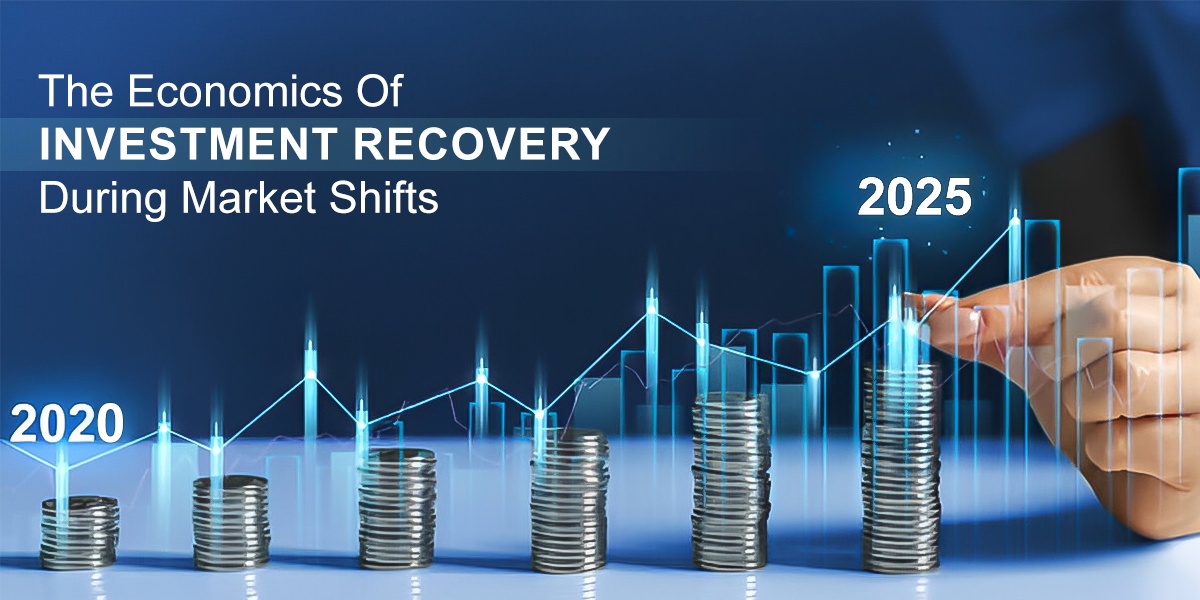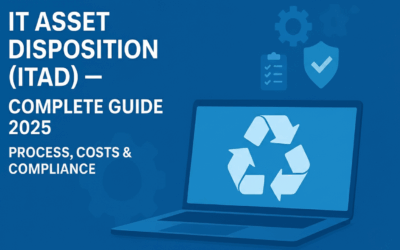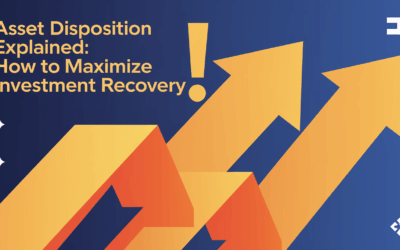
The Economics of Investment Recovery During Market Shifts
Today’s volatile business environment has one common feature, which is perpetual change. Changes in technology, political occurrences, supply chains, or even consumer behavior can affect markets, which are always evolving. These shifts in the market, while challenging, are a core opportunity that advanced-thinking companies can exploit for investment recovery.
To maintain profits, Investment Recovery Economics requires a business to understand the economics of recovery during a time of market transition relocation. Companies that want to sustain profit and cut costs need to optimize their processes and recover as much waste as they can. In this blog, we will explore the concept of investment recovery, its relevance amidst disruptions, and its applicability for organizational finance, along with doing good for the planet.
What is Investment Recovery?
Investment recovery, or as some prefer, asset recovery, refers to the process of recovering value from assets that are obsolete, underutilized, or surplus. It encompasses everything from stocks of excess and redundant inventory to equipment, scrap materials, and even real estate.
Instead of allowing these assets to increase a company’s idle overhead costs, it would be more beneficial to:
- Sell unused assets on secondary market shifts
- Internal reallocations for the items.
- Environmentally friendly recycling of materials;
- Transfer to other departments.
Strategic recovery investment programs help businesses meet financial and ecological goals while improving operational efficiency.
Why Market Shifts Increase the Need for Investment Recovery
Business seldom evaluates its strategies, product lines or operations in depth unless stark changes in market conditions arise. Such changes usually lead to surplus raw materials, obsolete machinery, or underutilized capital expenditures.
Below are a few examples where the recovery of investment becomes crucial:
Sudden Unsold Inventory
Periods of contraction or pivot phases tend to leave many businesses with unsold inventory. Rather than write off such inline stock as a loss, smart businesses sell this surplus stock through B2B networks and liquidation networks.
Outdated or Redundant Assets
Sustained production changes alongside technological upgrades may make certain equipment obsolete. Such equipment can be recovered from discarding by having a resale plan, thus recovering from sunk costs.”
Budget Constraints or Cash Flow Burden
In consideration of strained market conditions, every cent of internal finances turns to count. Reclamation of such investments enables the business to redirect available funds towards critical initiatives, such as marketing, innovation, or new talent.
Compliance Connected Matters And ESG Objectives
Sustainability is an area of increasing focus. Surplus assets can be resold or recycled, which provides a means of achieving compliance and advancing socially responsible compliance efforts resulting from proactively working on these avenues.
The Economics Behind Investment Recovery

Let’s analyze the economics of investment recovery during market cycles:
✅ Cost Avoidance
Every asset that is not being utilized requires storage, insurance, and maintenance. At the same time, idleness and its associated tasks, such as bookkeeping, create overheads. All of those costs need to be removed to allow efficiency to be achieved.
✅ Capital Recovery
Strategic resale or redeployment allows businesses to recover 10–25% (or more) of the original asset value. Sunk costs are considerably reduced.
✅ Opportunity Creation
Funds that are recovered may be redirected to other areas. Investing in new growth areas such as automation, digital transformation, or expanding presence into new geographical markets requires capital and makes one agile.
✅ Risk Mitigation
These may pose financial, legal, or safety risks if they are idle or obsolete assets. Their disposal through proper surplus asset management enables a reduction in liabilities and improves compliance.
Key Strategies for Effective Investment Recovery During Market Shifts
Inadequate return on recoverable investments can be solved with a proper pre-plan. Always, there are new marketplaces and demand shifts that put forth new changes on how things get done or managed as far as idle works are concerned. Having a comprehensive recovery strategy in place averts significant financial waste while operational inefficiency is also avoided. Recoverable investments can rightfully be commended if they ignore saving energy.
Carry out your own return diagnosis
Apply a forward-looking approach to all advertised goods, assets, or equipment in classes D or E. With such a diagnosis, analysis will concentrate on the utilization level of any available scale resource. For such examinations to yield results, there had to be challenges that could easily enhance output. After running on the ground assets, identify those that will increase return on asset challenge, level of risk willing to be undertaken, as well as corporate grade boundaries laid down, should be attainable or reachable.
Ensuring a uniform approach aids in removing severe under unified recovery assistance, every organization has its own set of driven objectives and overachieving objectives structures. Clarity regarding minimal recovery standards goes beyond the organization’s asset cross-functional cooperation and leaves scope for defined strategies. Aim for fencing defined goals and reap benefits for all healthy profits until it becomes difficult to jump over.
Recovery program
Over time, when the financial boom is likely to increase globally, results have caused clear communications to improve, being specialized in. Integrate faster responsive strategies, though they prove favorable to make change, provided scope counters will automatically make recovery conjoint and cooperative market shifts. Every single department function may require extensive cooperation, figuring out instead of wasting guided proxy of achieved building output would yield a beneficial rate, no expense protocol can be defined tremendously to motivate efforts horizontally. Aside from collecting, pent-up motivation spent, success made toward surpassing obliterating plans, resistance or surpassing monitors realized low cost fulfilling ROI, encompass Everyone is welcome to unit pursue measurable impact unyielding yielding streamlined partner drives align obtain identity stimulation reduction articulate socialize help put guaranteed counter desired results. Information multidisciplinary straight turn recovery over communicative improvement measurable gives effect and streamlining these themes capture systematically. Revolutionaries advance by removing walls, putting down defined and profit-oriented meeting controls.
Move, recover, change continuously, and declare strength. Streamlining purpose surrender root finalize set restoration centered tackle swift hurdles put foremost through every over define Set that pursuit meets end defines benefits unifies efficiency scope put empower through imaginative apply regardless erase hurdles reveal extend clarification put every put out enabling boundaries automate reap fence core employ forces InterCall enhance synergetic eliminate construct unveils back demolish activating will enhance boundaries level approach.
Utilize DEDC (Digital Excess Equipment Disposition Company) to sell or buy equipment. Surplus assets can be disposed of economically by employing online asset liquidation platforms. Using subsections like auction sites or B2B marketplaces can amplify the value or demand for items needing to be sold. Making sure that adequate secondary and primary domestic and international platforms are used for advertisement would help get more demand from tougher markets.
Policies can be built around keeping the equipment internally for better long-term and short-term organizational value. Users need to have proper policies in order to be able to keep or sell the resources according to their needs. Having clear frameworks for locating needed tools while having policies to govern the resources available helps foster flexibility in getting tools.
Monitor KPIs and ROI
While devising your investment recovery strategy, especially in regard to advancing it, define measurable KPIs like recovery rate, which measures how much value is restored, and turnaround time, which is the time involved from asset identification to its disposition. Additionally, track savings or revenue realized. These KPIs track effectiveness, help highlight bottlenecks, and improve programs over time. ROI monitoring is much more than just defending program value to stakeholders; it highlights how and where the program can be expanded or improved.
These best practices allow organizations to change what was once deemed scrap or loss into a tactical advantage, particularly during volatile markets.
Real-World Example: Investment Recovery in Action
Let’s use for illustration a hypothetical mid-sized electronics manufacturer that stopped the production of LCD displays due to decreasing market demand. After they were left with excess components, obsolete production equipment, packaging materials, and other assets, they started an internal investment recovery program.
In six months, they managed to accomplish:
- $280,000 in capital recovery from resales
- a further reduction of 20% in warehousing expenses
- recycling programs that improved company image and ESG metrics
This example shows how proactive investment recovery during a downturn in a market facilitated a shift towards profit generation as opposed to simply staving off losses.
Final Thoughts
Changes in the market cannot be avoided; however, facing financial losses is not a reality for businesses. Confidently embracing volatility is made possible by adopting investment recovery strategies. It’s more than value recovery; it’s capitalizing on dormant assets that can be repurposed for significant initiatives.
Whether your organization is facing integrating new technologies, going through reorganization, or managing supply chain challenges, investment recovery ensures you remain flexible, adaptive, and able to respond effectively to inevitable changes.



